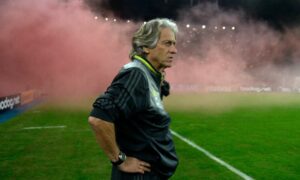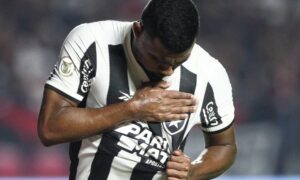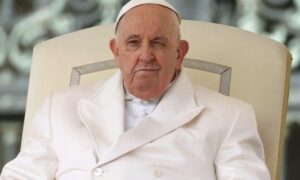The death of Pope Francis at 88 on Monday, April 21, has set in motion a series of meticulously planned ceremonies by the Vatican to honor the pontiff who led the Catholic Church for 12 years. The funeral, scheduled for Saturday, April 26, at 5 AM (Brasília time), will take place at St. Peter’s Basilica in Rome and be broadcast live to millions of faithful worldwide. Presided over by Cardinal Giovanni Battista Re, the ceremony follows a new liturgical protocol approved by Francis himself in 2024, which simplifies funeral rites and emphasizes the pope’s humility as a pastor. For the first time in over a century, the burial will occur outside the Vatican, at the Basilica of Santa Maria Maggiore, fulfilling the Argentine pontiff’s personal wish. World leaders, including Argentina’s President Javier Milei and U.S. President Donald Trump, have confirmed their attendance, turning the event into a diplomatic and religious milestone.
The body of Francis, dressed in a simple white cassock and red vestments, was placed in a wooden coffin lined with zinc at Casa Santa Marta, his residence. On Wednesday, April 23, at 4 AM (Brasília time), the coffin will be moved in a procession to St. Peter’s Basilica, where it will remain on display for public homage over three days. Thousands of pilgrims from Rome and beyond are expected to attend, paying respects to the pope known for championing the poor, refugees, and contemporary social issues. The procession will pass through Santa Marta Square, the Square of the Roman Protomartyrs, and the Arch of the Bells, culminating at the basilica’s main entrance.
Beyond the public viewing, the funeral includes the celebration of the Requiem Mass, a central liturgical rite in papal exequies, followed by a procession to the Basilica of Santa Maria Maggiore, where Francis will be laid to rest. This choice reflects his deep devotion to the Virgin Mary, to whom he often turned in prayer before and after apostolic journeys. The reform of funeral rites, published in the book Ordo Exsequiarum Romani Pontificis, eliminates traditions such as the use of three coffins and the elevated display of the body, reinforcing Francis’ vision of a papacy stripped of grandeur.
Key stages of the funeral
The funeral rite for Pope Francis is divided into three distinct moments, as established by the Catholic Church:
- Certification of death: Conducted on Monday, April 21, by Cardinal Camerlengo Kevin Joseph Farrell, who called the pope by his baptismal name, Jorge Mario Bergoglio, three times to confirm his passing. The Fisherman’s Ring, a symbol of the papacy, was destroyed with a ceremonial hammer.
- Public viewing: From April 23 to 25, the body will remain in St. Peter’s Basilica in an open coffin, allowing pilgrims to pay their respects.
- Mass and burial: On Saturday, April 26, the Requiem Mass will be celebrated, followed by a procession and burial at the Basilica of Santa Maria Maggiore.
A reforming pope and his vision of simplicity
Francis, the first Latin American and Jesuit pope, left an indelible mark on his papacy through reforms aimed at aligning the Church with modern challenges. Born in Buenos Aires on December 17, 1936, Jorge Mario Bergoglio became pope on March 13, 2013, following the rare resignation of Benedict XVI. Over his 12-year tenure, he advocated for the inclusion of marginalized groups, championed social justice, and addressed issues like climate change and inequality. His decision to simplify papal funeral rites reflects this legacy, rejecting symbols of power in favor of a pastoral image dedicated to the faithful.
The reform of the funeral protocol, approved in April 2024 and published in November, eliminates practices such as the use of a catafalque, a raised platform traditionally used to display the pope’s body. Instead, Francis’ coffin will rest directly on the floor of St. Peter’s Basilica, symbolizing humility. The replacement of the traditional three coffins (cypress, lead, and oak) with a single wooden one lined with zinc further underscores this vision. The shift in burial location, breaking with the tradition of interring popes in the Vatican Grottoes, highlights Francis’ personal connection to the Basilica of Santa Maria Maggiore, one of the world’s foremost Marian sanctuaries.
The global impact of his decisions extends beyond religion. The presence of world leaders at the funeral, including Italian Prime Minister Giorgia Meloni and Ukrainian President Volodymyr Zelensky, underscores Francis’ role as a figure of interreligious and political dialogue. The ceremony, expected to draw millions in person and via television, also marks the start of a nine-day mourning period known as Novendiales, during which Masses will be offered in memory of the pontiff.
What to expect from the funeral ceremony
The Requiem Mass, the centerpiece of the funeral, will be held in St. Peter’s Square to accommodate the large number of expected pilgrims. Cardinal Giovanni Battista Re, Dean of the College of Cardinals, will lead the celebration, delivering a homily on Francis’ life and spiritual legacy. The liturgy will follow the rite outlined in the Ordo Exsequiarum Romani Pontificis, including moments like the Last Commendation and Valediction, which mark the final farewell to the pope. After the Mass, the coffin will be carried in a procession through Rome’s streets to the Basilica of Santa Maria Maggiore, where the rite of interment will be presided over by the cardinal camerlengo.
Holding the Mass outdoors in St. Peter’s Square accounts for April’s weather and the need to accommodate a large crowd. The coffin, adorned with an open Gospel during the ceremony, will be carried by 12 pallbearers, following an ancient tradition. The procession to Santa Maria Maggiore will feature liturgical chants, such as the Salve Regina, and moments of prayer, reinforcing the Marian spirituality that defined Francis’ papacy. His tomb, per his will, will be simple, carved into the ground and inscribed only with “Franciscus.”
Detailed funeral timeline
The Vatican has released the official schedule of funeral ceremonies, extending until the burial:
- April 21: Certification of death and initial prayers, with a Holy Rosary in St. Peter’s Square led by Cardinal Mauro Gambetti.
- April 23: Transfer of the body from Casa Santa Marta to St. Peter’s Basilica at 4 AM (Brasília time), followed by the start of public viewing.
- April 24 and 25: Public viewing in St. Peter’s Basilica, with continuous access for pilgrims.
- April 26: Requiem Mass at 5 AM (Brasília time), followed by the procession and burial at the Basilica of Santa Maria Maggiore.
- April 27 to May 4: Novendiales period, with daily Masses offered for the pope’s soul.
Transition to the conclave
As the world bids farewell to Francis, the Vatican prepares for its next chapter: the election of a new pope. During the Sede Vacante period, Cardinal Camerlengo Kevin Joseph Farrell assumes temporary administration of the Church, overseeing both the funeral and the conclave. The College of Cardinals, comprising 252 members, of whom 138 under 80 are eligible to vote, is expected to convene between May 5 and 10 to begin the selection process. The election, held in the Sistine Chapel, requires a two-thirds majority and may extend over days, with pauses for prayer if consensus is not reached.
The destruction of the Fisherman’s Ring, performed after Francis’ death, symbolizes the end of his papacy and the transition to new leadership. Engraved with an image of St. Peter fishing, the ring was used as a seal on official documents. Its breaking by the camerlengo prevents misuse and marks the start of the Sede Vacante. During this period, cardinals will also address administrative and logistical matters, preparing the Vatican for the conclave, which will be closely watched by Catholics worldwide.
The election process is shrouded in secrecy, with cardinals swearing an oath of absolute confidentiality. White smoke from the Sistine Chapel’s chimney will signal the selection of a new pope, followed by the proclamation Habemus Papam from St. Peter’s Basilica’s balcony. Until then, the Church navigates a time of mourning and reflection, as the faithful recall Francis’ legacy as a pope who sought to transform the Church through simplicity and openness.
Global impact of Francis’ death
The death of Francis has sparked worldwide mourning, with expressions of grief from religious leaders, politicians, and pilgrims. In Argentina, his homeland, President Javier Milei declared a national mourning period, while churches in Buenos Aires held Masses in his memory. In the United States, Donald Trump praised Francis’ work for the poor, while in Ukraine, Volodymyr Zelensky recalled his support for war victims. In Brazil, President Luiz Inácio Lula da Silva confirmed his attendance at the funeral, reinforcing ties between the country and the Vatican.
The Basilica of Santa Maria Maggiore, chosen by Francis for his final resting place, dates back to the 5th century and is one of the West’s foremost shrines dedicated to the Virgin Mary. Francis frequently visited the site, praying before the Salus Populi Romani icon, revered for its association with miracles. His decision to be buried there, rather than in the Vatican Grottoes, where 91 popes rest, breaks a tradition last interrupted by Leo XIII in 1903, who was buried at St. John Lateran.
The presence of leaders from various faiths at the funeral, including Jewish and Muslim representatives, reflects Francis’ commitment to interreligious dialogue. During his papacy, he achieved historic milestones, such as signing the Document on Human Fraternity with Al-Azhar’s Grand Imam in 2019, promoting peace between Christians and Muslims. These efforts leave a legacy that will shape the selection of the next pope, at a time when the Church faces challenges like secularization, internal crises, and the need to maintain global relevance.
How to watch the funeral live
The funeral of Pope Francis will be broadcast live by television networks and digital platforms, enabling Catholics worldwide to follow the ceremony. In Brazil, channels like GloboNews, Record News, and TV Aparecida have confirmed full coverage, with commentary from religious experts and reporters in Rome. Streaming platforms, including the Vatican News YouTube channel, will offer live broadcasts in Portuguese, Spanish, and English.
For those in Rome, St. Peter’s Square will be open to the public during the Requiem Mass, with large screens set up for better viewing. The procession to Santa Maria Maggiore, however, will have restricted access, prioritizing authorities and clergy. The Vatican advises pilgrims to arrive early at St. Peter’s Square, as capacity is limited to about 300,000 people. Enhanced security measures, including metal detectors and crowd control, will ensure order during the event.
Details of the rite and its symbolism
The funeral rite for Francis is rich in symbolism, blending Catholic tradition with the innovations he introduced. During the public viewing, a white cloth will be placed over Francis’ face before the coffin is sealed, a practice retained in papal funerals. The coffin, containing a document outlining his papacy and a pouch with coins from his pontificate, will be closed after the Requiem Mass. These elements emphasize continuity and memory, linking Francis’ legacy to his predecessors.
The procession to Santa Maria Maggiore will feature Gregorian chants, such as the Litany of All Saints and the Responsory Subvenite Sancti Dei, evoking the spirituality of the early Church. The cardinal camerlengo, sprinkling holy water and incensing the coffin, will perform gestures symbolizing purification and the entrustment of the pope’s soul to God. The choice of a simple tomb, without ornamentation, aligns with Francis’ will, which requested to be remembered solely as “Franciscus,” without additional titles.
The participation of pilgrims from around the world, many traveling to Rome spontaneously, underscores the universality of Francis’ message. During his papacy, he visited over 60 countries, including Brazil, where he led the World Youth Day in 2013. His ability to connect with youth, the poor, and the marginalized left a lasting impact, which will be remembered during the funeral rites.
Francis’ legacy and the Church’s future
Francis’ papacy was defined by moments of rupture and continuity. He faced internal resistance to his reforms, such as greater inclusion for divorced and remarried Catholics and increased roles for women in the Church, while upholding Catholic doctrine on issues like the defense of life and family. His encyclical Laudato Si’, on environmental protection, became a global reference, influencing debates on sustainability. Francis’ death opens a period of introspection for the Church, which must now select a leader capable of advancing his vision of renewal.
The Basilica of Santa Maria Maggiore, where Francis will be buried, will remain open for visits after the funeral, allowing pilgrims to honor his tomb. The site, home to relics like the crib attributed to Jesus, is a major pilgrimage destination and will cement Francis’ legacy as a Marian pope. His choice to be buried outside the Vatican may inspire future popes to break with tradition, personalizing their legacies according to their spiritualities.
Key figures in the funeral and conclave
Several figures play central roles in the ceremonies and the Church’s transition:
- Cardinal Kevin Joseph Farrell: Camerlengo, responsible for administration during the Sede Vacante and for organizing the funeral and conclave.
- Cardinal Giovanni Battista Re: Dean of the College of Cardinals, presiding over the Requiem Mass.
- Cardinal Pietro Parolin: Secretary of State, seen praying beside Francis’ coffin.
- Cardinal Mauro Gambetti: Led the Holy Rosary in St. Peter’s Square on the day of the pope’s death.
A global event of profound significance
The funeral of Francis is not only a moment of mourning but also a celebration of his life and mission. The attendance of leaders like Timor-Leste’s President José Ramos-Horta and U.S. First Lady Melania Trump highlights the event’s international significance. Extensive media coverage, with journalists from around the world in Rome, ensures that every detail reaches millions, reinforcing the Catholic Church’s influence in an increasingly secular world.
The procession through Rome’s streets, from St. Peter’s Basilica to Santa Maria Maggiore, will be one of the funeral’s most symbolic moments, uniting pilgrims and dignitaries in a farewell gesture. The coffin, carried in an open vehicle, will allow the public to bid farewell to Francis, who always sought closeness with the people. The burial ceremony, with the chanting of the Salve Regina, will conclude the funeral rites, but Francis’ legacy will continue to resonate in the Church and beyond.

The death of Pope Francis at 88 on Monday, April 21, has set in motion a series of meticulously planned ceremonies by the Vatican to honor the pontiff who led the Catholic Church for 12 years. The funeral, scheduled for Saturday, April 26, at 5 AM (Brasília time), will take place at St. Peter’s Basilica in Rome and be broadcast live to millions of faithful worldwide. Presided over by Cardinal Giovanni Battista Re, the ceremony follows a new liturgical protocol approved by Francis himself in 2024, which simplifies funeral rites and emphasizes the pope’s humility as a pastor. For the first time in over a century, the burial will occur outside the Vatican, at the Basilica of Santa Maria Maggiore, fulfilling the Argentine pontiff’s personal wish. World leaders, including Argentina’s President Javier Milei and U.S. President Donald Trump, have confirmed their attendance, turning the event into a diplomatic and religious milestone.
The body of Francis, dressed in a simple white cassock and red vestments, was placed in a wooden coffin lined with zinc at Casa Santa Marta, his residence. On Wednesday, April 23, at 4 AM (Brasília time), the coffin will be moved in a procession to St. Peter’s Basilica, where it will remain on display for public homage over three days. Thousands of pilgrims from Rome and beyond are expected to attend, paying respects to the pope known for championing the poor, refugees, and contemporary social issues. The procession will pass through Santa Marta Square, the Square of the Roman Protomartyrs, and the Arch of the Bells, culminating at the basilica’s main entrance.
Beyond the public viewing, the funeral includes the celebration of the Requiem Mass, a central liturgical rite in papal exequies, followed by a procession to the Basilica of Santa Maria Maggiore, where Francis will be laid to rest. This choice reflects his deep devotion to the Virgin Mary, to whom he often turned in prayer before and after apostolic journeys. The reform of funeral rites, published in the book Ordo Exsequiarum Romani Pontificis, eliminates traditions such as the use of three coffins and the elevated display of the body, reinforcing Francis’ vision of a papacy stripped of grandeur.
Key stages of the funeral
The funeral rite for Pope Francis is divided into three distinct moments, as established by the Catholic Church:
- Certification of death: Conducted on Monday, April 21, by Cardinal Camerlengo Kevin Joseph Farrell, who called the pope by his baptismal name, Jorge Mario Bergoglio, three times to confirm his passing. The Fisherman’s Ring, a symbol of the papacy, was destroyed with a ceremonial hammer.
- Public viewing: From April 23 to 25, the body will remain in St. Peter’s Basilica in an open coffin, allowing pilgrims to pay their respects.
- Mass and burial: On Saturday, April 26, the Requiem Mass will be celebrated, followed by a procession and burial at the Basilica of Santa Maria Maggiore.
A reforming pope and his vision of simplicity
Francis, the first Latin American and Jesuit pope, left an indelible mark on his papacy through reforms aimed at aligning the Church with modern challenges. Born in Buenos Aires on December 17, 1936, Jorge Mario Bergoglio became pope on March 13, 2013, following the rare resignation of Benedict XVI. Over his 12-year tenure, he advocated for the inclusion of marginalized groups, championed social justice, and addressed issues like climate change and inequality. His decision to simplify papal funeral rites reflects this legacy, rejecting symbols of power in favor of a pastoral image dedicated to the faithful.
The reform of the funeral protocol, approved in April 2024 and published in November, eliminates practices such as the use of a catafalque, a raised platform traditionally used to display the pope’s body. Instead, Francis’ coffin will rest directly on the floor of St. Peter’s Basilica, symbolizing humility. The replacement of the traditional three coffins (cypress, lead, and oak) with a single wooden one lined with zinc further underscores this vision. The shift in burial location, breaking with the tradition of interring popes in the Vatican Grottoes, highlights Francis’ personal connection to the Basilica of Santa Maria Maggiore, one of the world’s foremost Marian sanctuaries.
The global impact of his decisions extends beyond religion. The presence of world leaders at the funeral, including Italian Prime Minister Giorgia Meloni and Ukrainian President Volodymyr Zelensky, underscores Francis’ role as a figure of interreligious and political dialogue. The ceremony, expected to draw millions in person and via television, also marks the start of a nine-day mourning period known as Novendiales, during which Masses will be offered in memory of the pontiff.
What to expect from the funeral ceremony
The Requiem Mass, the centerpiece of the funeral, will be held in St. Peter’s Square to accommodate the large number of expected pilgrims. Cardinal Giovanni Battista Re, Dean of the College of Cardinals, will lead the celebration, delivering a homily on Francis’ life and spiritual legacy. The liturgy will follow the rite outlined in the Ordo Exsequiarum Romani Pontificis, including moments like the Last Commendation and Valediction, which mark the final farewell to the pope. After the Mass, the coffin will be carried in a procession through Rome’s streets to the Basilica of Santa Maria Maggiore, where the rite of interment will be presided over by the cardinal camerlengo.
Holding the Mass outdoors in St. Peter’s Square accounts for April’s weather and the need to accommodate a large crowd. The coffin, adorned with an open Gospel during the ceremony, will be carried by 12 pallbearers, following an ancient tradition. The procession to Santa Maria Maggiore will feature liturgical chants, such as the Salve Regina, and moments of prayer, reinforcing the Marian spirituality that defined Francis’ papacy. His tomb, per his will, will be simple, carved into the ground and inscribed only with “Franciscus.”
Detailed funeral timeline
The Vatican has released the official schedule of funeral ceremonies, extending until the burial:
- April 21: Certification of death and initial prayers, with a Holy Rosary in St. Peter’s Square led by Cardinal Mauro Gambetti.
- April 23: Transfer of the body from Casa Santa Marta to St. Peter’s Basilica at 4 AM (Brasília time), followed by the start of public viewing.
- April 24 and 25: Public viewing in St. Peter’s Basilica, with continuous access for pilgrims.
- April 26: Requiem Mass at 5 AM (Brasília time), followed by the procession and burial at the Basilica of Santa Maria Maggiore.
- April 27 to May 4: Novendiales period, with daily Masses offered for the pope’s soul.
Transition to the conclave
As the world bids farewell to Francis, the Vatican prepares for its next chapter: the election of a new pope. During the Sede Vacante period, Cardinal Camerlengo Kevin Joseph Farrell assumes temporary administration of the Church, overseeing both the funeral and the conclave. The College of Cardinals, comprising 252 members, of whom 138 under 80 are eligible to vote, is expected to convene between May 5 and 10 to begin the selection process. The election, held in the Sistine Chapel, requires a two-thirds majority and may extend over days, with pauses for prayer if consensus is not reached.
The destruction of the Fisherman’s Ring, performed after Francis’ death, symbolizes the end of his papacy and the transition to new leadership. Engraved with an image of St. Peter fishing, the ring was used as a seal on official documents. Its breaking by the camerlengo prevents misuse and marks the start of the Sede Vacante. During this period, cardinals will also address administrative and logistical matters, preparing the Vatican for the conclave, which will be closely watched by Catholics worldwide.
The election process is shrouded in secrecy, with cardinals swearing an oath of absolute confidentiality. White smoke from the Sistine Chapel’s chimney will signal the selection of a new pope, followed by the proclamation Habemus Papam from St. Peter’s Basilica’s balcony. Until then, the Church navigates a time of mourning and reflection, as the faithful recall Francis’ legacy as a pope who sought to transform the Church through simplicity and openness.
Global impact of Francis’ death
The death of Francis has sparked worldwide mourning, with expressions of grief from religious leaders, politicians, and pilgrims. In Argentina, his homeland, President Javier Milei declared a national mourning period, while churches in Buenos Aires held Masses in his memory. In the United States, Donald Trump praised Francis’ work for the poor, while in Ukraine, Volodymyr Zelensky recalled his support for war victims. In Brazil, President Luiz Inácio Lula da Silva confirmed his attendance at the funeral, reinforcing ties between the country and the Vatican.
The Basilica of Santa Maria Maggiore, chosen by Francis for his final resting place, dates back to the 5th century and is one of the West’s foremost shrines dedicated to the Virgin Mary. Francis frequently visited the site, praying before the Salus Populi Romani icon, revered for its association with miracles. His decision to be buried there, rather than in the Vatican Grottoes, where 91 popes rest, breaks a tradition last interrupted by Leo XIII in 1903, who was buried at St. John Lateran.
The presence of leaders from various faiths at the funeral, including Jewish and Muslim representatives, reflects Francis’ commitment to interreligious dialogue. During his papacy, he achieved historic milestones, such as signing the Document on Human Fraternity with Al-Azhar’s Grand Imam in 2019, promoting peace between Christians and Muslims. These efforts leave a legacy that will shape the selection of the next pope, at a time when the Church faces challenges like secularization, internal crises, and the need to maintain global relevance.
How to watch the funeral live
The funeral of Pope Francis will be broadcast live by television networks and digital platforms, enabling Catholics worldwide to follow the ceremony. In Brazil, channels like GloboNews, Record News, and TV Aparecida have confirmed full coverage, with commentary from religious experts and reporters in Rome. Streaming platforms, including the Vatican News YouTube channel, will offer live broadcasts in Portuguese, Spanish, and English.
For those in Rome, St. Peter’s Square will be open to the public during the Requiem Mass, with large screens set up for better viewing. The procession to Santa Maria Maggiore, however, will have restricted access, prioritizing authorities and clergy. The Vatican advises pilgrims to arrive early at St. Peter’s Square, as capacity is limited to about 300,000 people. Enhanced security measures, including metal detectors and crowd control, will ensure order during the event.
Details of the rite and its symbolism
The funeral rite for Francis is rich in symbolism, blending Catholic tradition with the innovations he introduced. During the public viewing, a white cloth will be placed over Francis’ face before the coffin is sealed, a practice retained in papal funerals. The coffin, containing a document outlining his papacy and a pouch with coins from his pontificate, will be closed after the Requiem Mass. These elements emphasize continuity and memory, linking Francis’ legacy to his predecessors.
The procession to Santa Maria Maggiore will feature Gregorian chants, such as the Litany of All Saints and the Responsory Subvenite Sancti Dei, evoking the spirituality of the early Church. The cardinal camerlengo, sprinkling holy water and incensing the coffin, will perform gestures symbolizing purification and the entrustment of the pope’s soul to God. The choice of a simple tomb, without ornamentation, aligns with Francis’ will, which requested to be remembered solely as “Franciscus,” without additional titles.
The participation of pilgrims from around the world, many traveling to Rome spontaneously, underscores the universality of Francis’ message. During his papacy, he visited over 60 countries, including Brazil, where he led the World Youth Day in 2013. His ability to connect with youth, the poor, and the marginalized left a lasting impact, which will be remembered during the funeral rites.
Francis’ legacy and the Church’s future
Francis’ papacy was defined by moments of rupture and continuity. He faced internal resistance to his reforms, such as greater inclusion for divorced and remarried Catholics and increased roles for women in the Church, while upholding Catholic doctrine on issues like the defense of life and family. His encyclical Laudato Si’, on environmental protection, became a global reference, influencing debates on sustainability. Francis’ death opens a period of introspection for the Church, which must now select a leader capable of advancing his vision of renewal.
The Basilica of Santa Maria Maggiore, where Francis will be buried, will remain open for visits after the funeral, allowing pilgrims to honor his tomb. The site, home to relics like the crib attributed to Jesus, is a major pilgrimage destination and will cement Francis’ legacy as a Marian pope. His choice to be buried outside the Vatican may inspire future popes to break with tradition, personalizing their legacies according to their spiritualities.
Key figures in the funeral and conclave
Several figures play central roles in the ceremonies and the Church’s transition:
- Cardinal Kevin Joseph Farrell: Camerlengo, responsible for administration during the Sede Vacante and for organizing the funeral and conclave.
- Cardinal Giovanni Battista Re: Dean of the College of Cardinals, presiding over the Requiem Mass.
- Cardinal Pietro Parolin: Secretary of State, seen praying beside Francis’ coffin.
- Cardinal Mauro Gambetti: Led the Holy Rosary in St. Peter’s Square on the day of the pope’s death.
A global event of profound significance
The funeral of Francis is not only a moment of mourning but also a celebration of his life and mission. The attendance of leaders like Timor-Leste’s President José Ramos-Horta and U.S. First Lady Melania Trump highlights the event’s international significance. Extensive media coverage, with journalists from around the world in Rome, ensures that every detail reaches millions, reinforcing the Catholic Church’s influence in an increasingly secular world.
The procession through Rome’s streets, from St. Peter’s Basilica to Santa Maria Maggiore, will be one of the funeral’s most symbolic moments, uniting pilgrims and dignitaries in a farewell gesture. The coffin, carried in an open vehicle, will allow the public to bid farewell to Francis, who always sought closeness with the people. The burial ceremony, with the chanting of the Salve Regina, will conclude the funeral rites, but Francis’ legacy will continue to resonate in the Church and beyond.







